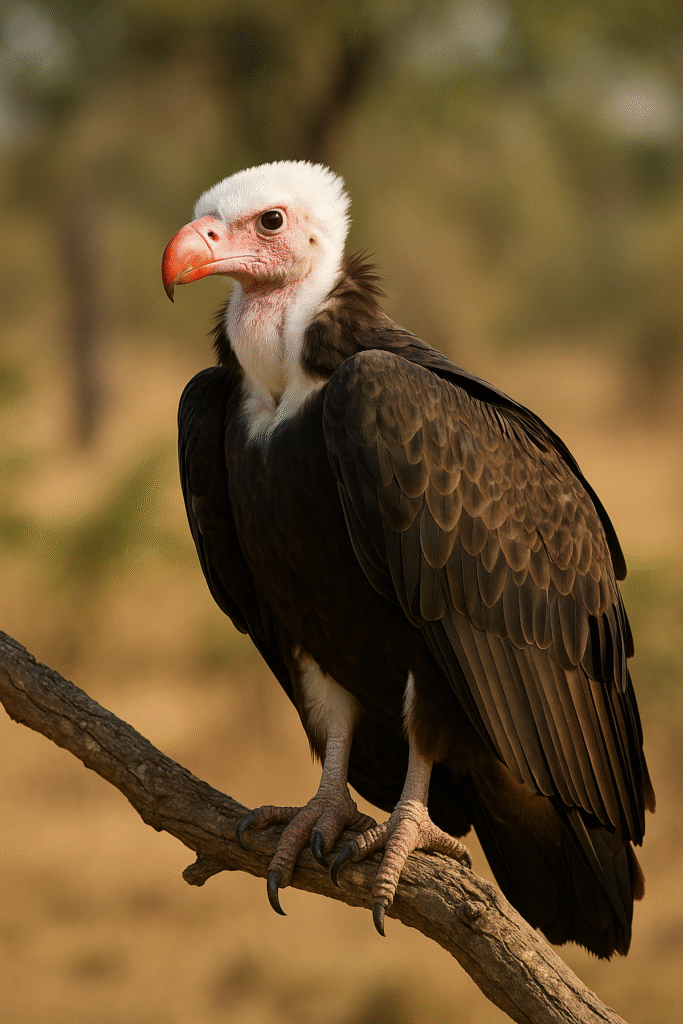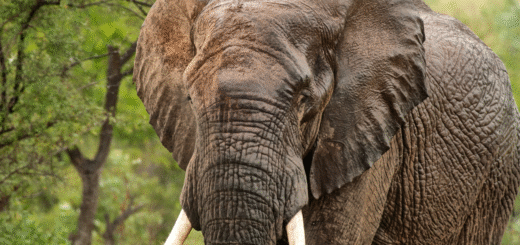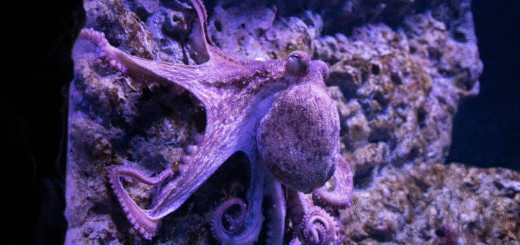White-Headed Vulture: The Rare Raptor of Africa’s Skies
The White-Headed Vulture (Trigonoceps occipitalis) is one of Africa’s most distinctive and rare birds of prey. With its striking appearance, unique behavior, and critically endangered status, this scavenger plays a vital role in maintaining ecosystem health. As a lesser-known vulture species, it deserves more attention from conservationists, bird watchers, and nature lovers alike.

Distinctive Appearance
The White-Headed Vulture stands out among its cousins with bold contrasts in its plumage and features. Its white head and crest, bordered by dark brown to black feathers, give it a regal and unmistakable look. The bird’s pinkish-red face and sharp, hooked beak reflect its powerful scavenging capabilities. Males and females appear similar, although females tend to be slightly larger.
Key features:
- White crest and underparts
- Dark brown to black upperparts
- Bare pink or reddish facial skin
- Broad wingspan (about 2.3 meters / 7.5 feet)
Habitat and Range
Native to sub-Saharan Africa, the White-Headed Vulture prefers dry savannas, open woodlands, and lightly forested areas. Unlike many other vulture species that gather in large groups, this vulture is often seen alone or in pairs, usually perched on trees scanning the horizon for food.
Countries where it is found include:
- Botswana
- Kenya
- Tanzania
- South Africa
- Zambia
- Mozambique
- Ethiopia
Diet and Hunting Behavior
While primarily a scavenger, the White-Headed Vulture is also known to hunt live prey, setting it apart from most vultures. It feeds on small mammals, reptiles, and carrion. With exceptional eyesight and a powerful beak, it tears through tough hides and remains to access nutritious tissue.
Uniquely, this vulture often arrives earlier than other scavengers at carcasses, giving it a competitive advantage in the wild.
Conservation Status: Critically Endangered
According to the IUCN Red List, the White-Headed Vulture is classified as Critically Endangered, with populations continuing to decline. The main threats include:
- Habitat loss due to agriculture and development
- Poisoning (both intentional and accidental)
- Electrocution on power lines
- Reduced availability of food due to human encroachment
Conservation Efforts
Organizations like BirdLife International, the Endangered Wildlife Trust, and African Parks are working to monitor and protect remaining populations. Key efforts include:
- Protected area management
- Anti-poisoning campaigns
- Education and outreach to local communities
- Vulture safe zones and breeding programs
Why the White-Headed Vulture Matters
As a scavenger, the White-Headed Vulture plays a critical role in cleaning up ecosystems, helping prevent the spread of disease by consuming dead animals. Its decline not only threatens biodiversity but also public health and environmental balance.
Final Thoughts
The White-Headed Vulture may not be as famous as the lion or elephant, but it is just as important. With its unique traits, rare beauty, and essential ecological role, this African raptor deserves both awareness and action. Protecting it means protecting the integrity of Africa’s wild landscapes.








